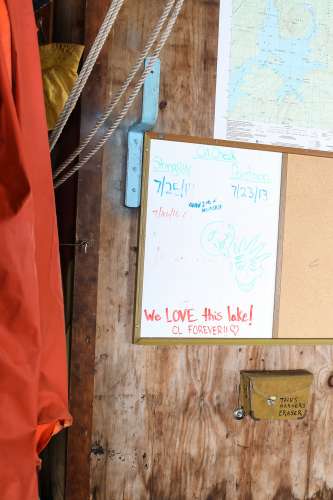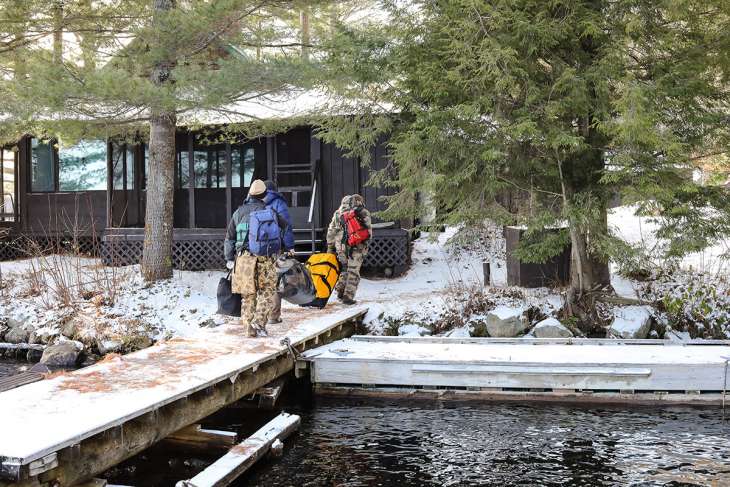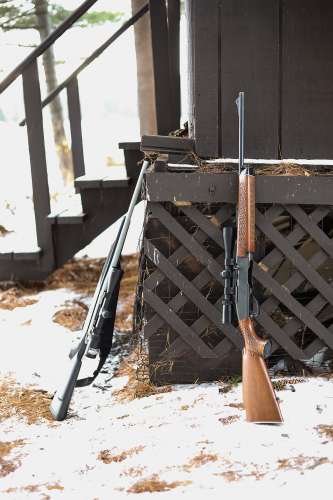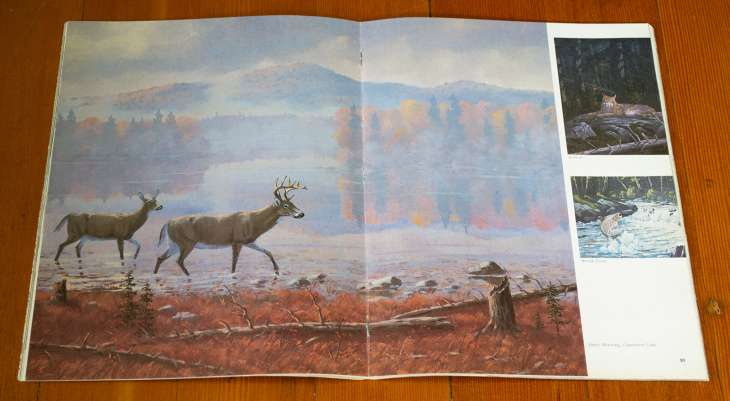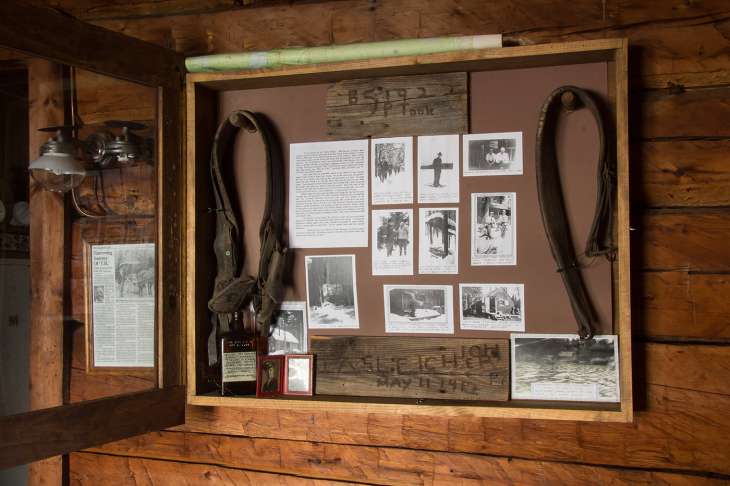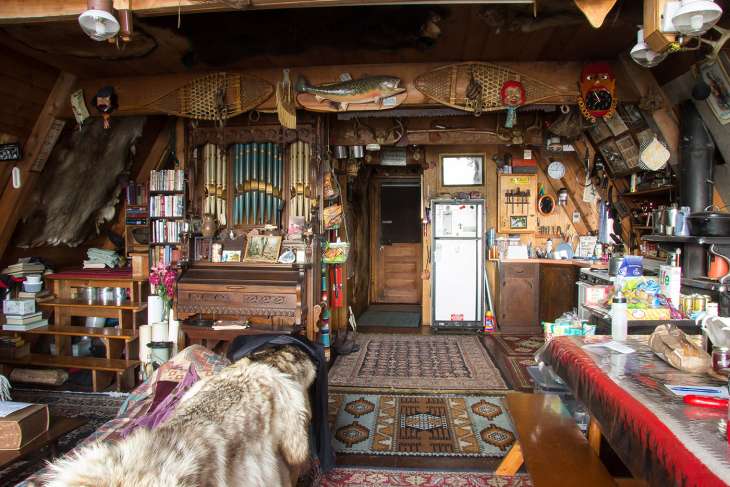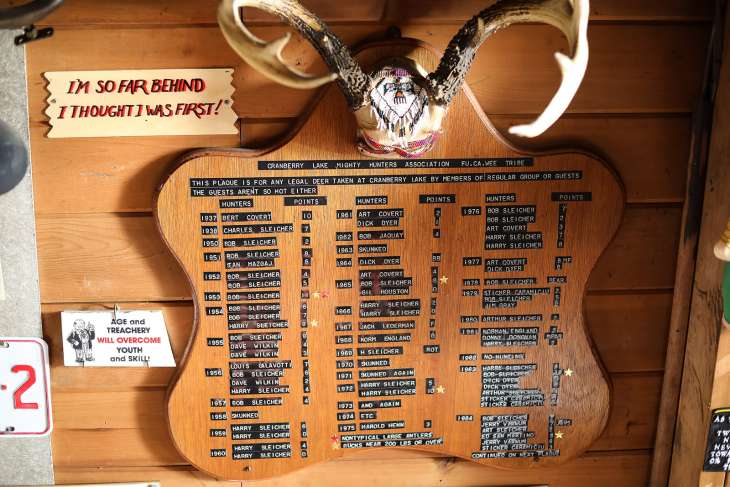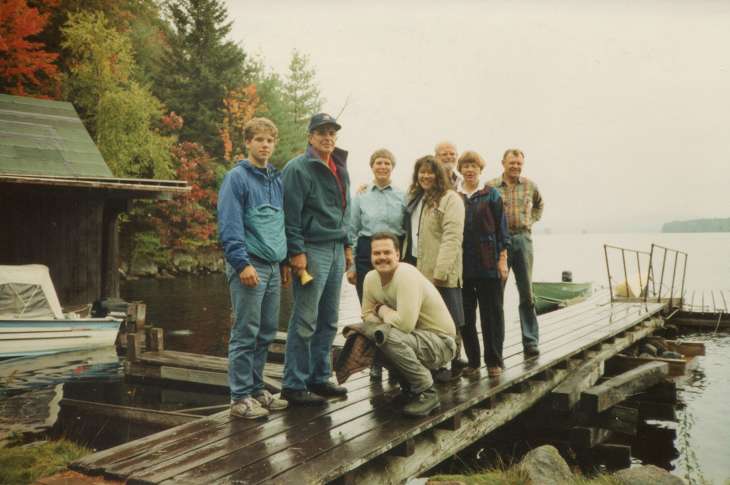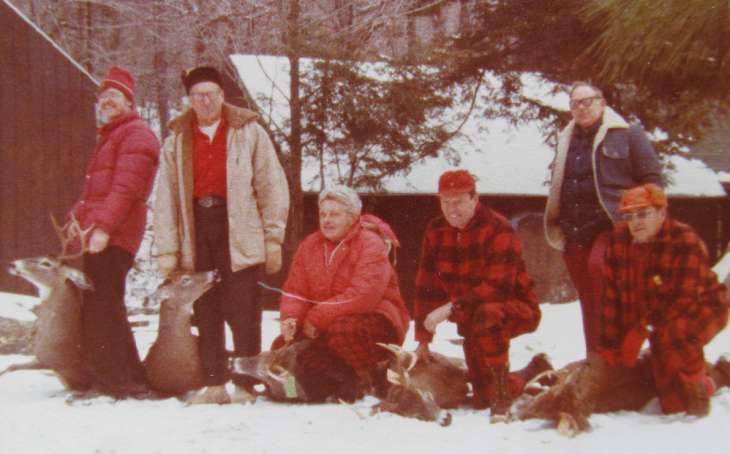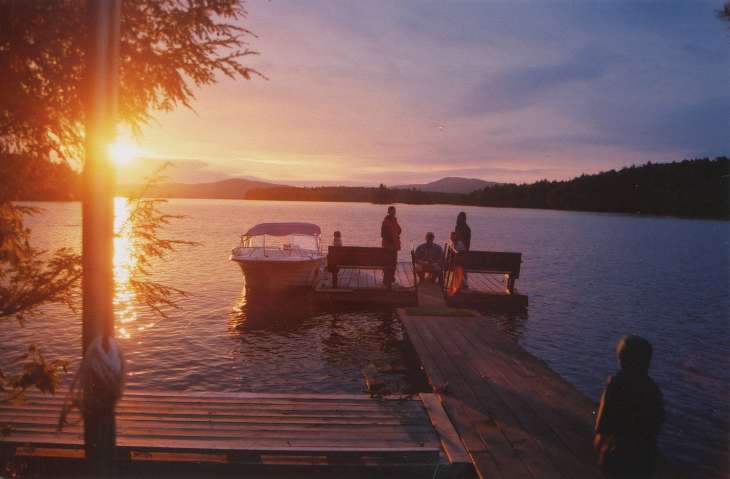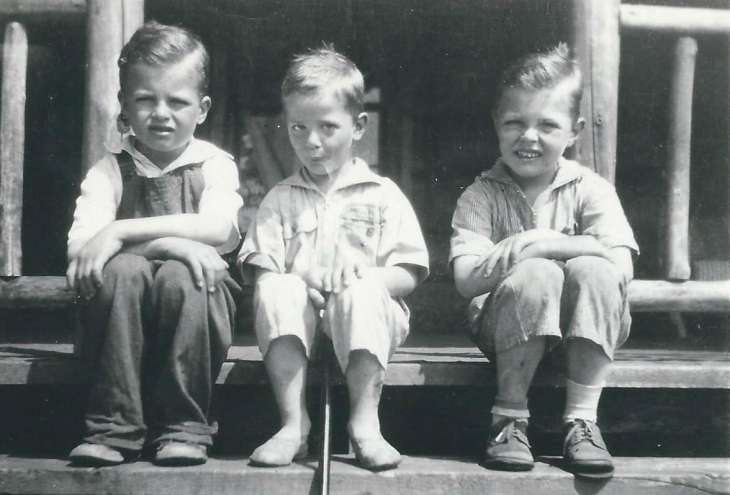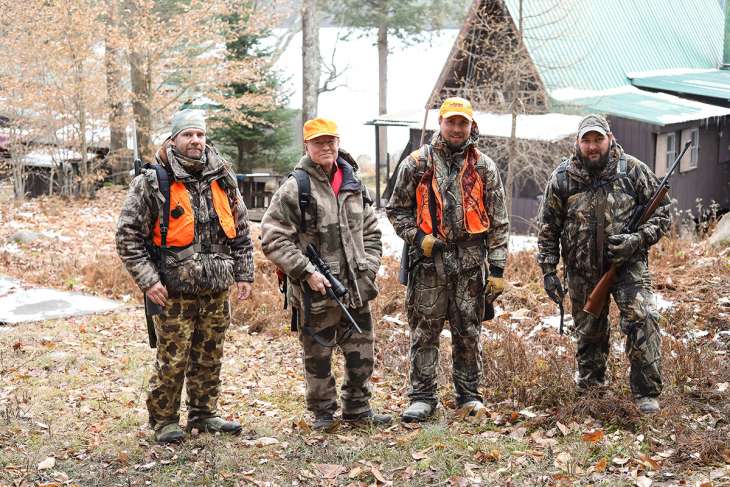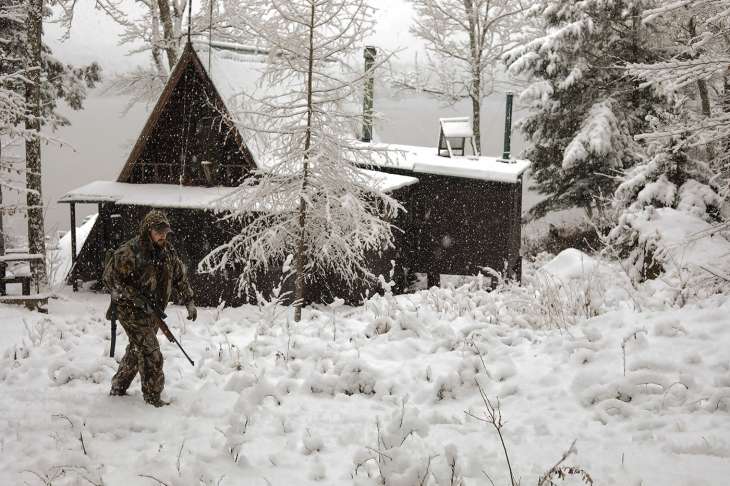Every fall, members of the Sleicher family return to their Adirondack deer camp in search of something elusive. Like so many parts of rural culture, the ritual is timeless – and tenuous.
A PLACE APART: Beyond the reach of power lines and reliable cell service, “Garondah,” right, requires hardiness and old-fashioned resourcefulness, and serves as a retreat from the pressures and pace of twenty-first century life. Accessible only by boat, the camp sits on a seven-acre inholding within the vast Adirondack Park. Such traditional ownership can be threatened as the state buys back private properties surrounded by protected land. An undeveloped 11-acre inholding on the lake’s opposite shore was recently purchased by the state for $133,000.
ENVIRONMENT: A topographic map brightens the wall of the boathouse, right. During the early decades of Sleicher ownership, the cutover forest surrounding Cranberry Lake’s fingery peninsulas was thick with shrubs and saplings and devoid of predators, ideal for growing whitetails. Now the woods have come back; coyotes have returned; beech bark disease has wiped out the once-nourishing beech nut crop. The changes in habitat have led to fewer deer.
LINEAGE: Originally a single log building, the Sleicher camp, above, has evolved into a complex of cabins and outbuildings along the western shore of 7,000-acre Cranberry Lake, some 60 miles west of Lake Placid. Charles Sleicher, Sr., a Rhode Island foundry owner, bought the property in 1922 from a man who had built a cabin here for a wife who refused to even visit, unhappy with the remote location.
FATHERS AND SONS: November, 2018: the crew arrives. The hunters this year include brothers Peter and Bret Sleicher; Peter’s college-age son, Colton (another son, William, has been a regular); Bob Rogers and his son, Tom; and Nathan Weston, a childhood buddy of Bret’s. Along with time in the woods and a shot at a deer, the annual gathering gives the men – coming in from four different states and from up the road in Potsdam – the chance to reconnect and reminisce. The hunting trips link generations in time and place.
RITE OF PASSAGE: Deer rifles, cleaned and sighted, stand at the ready. The number of hunting licenses sold in New York state has declined nearly 30 percent over the past four decades, down from a high of 807,500 in 1984. With fewer young people hunting comes a shift in a traditional, formative relationship to the big woods.
ROMANCE: For decades, the camp’s upkeep fell to Charles Sleicher’s sons, Bob and Harry. Bob, a vice president at the foundry, was an accomplished wildlife artist whose paintings graced the pages of national and regional publications, including this Adirondack scene for The Conservationist magazine in 1992. He passed away in 2017. Harry, still living, sticks close to a retirement home these days in Rhode Island. The romance of the family hunting camp can turn to stark reality in times of transition, when the responsibility for the time and expense of maintaining the property confronts the new generation.
FAMILY HISTORY: Charles Sleicher’s half-brother and best friend, Bill, owned an even earlier camp on leased land an hour southeast of Cranberry Lake, from the turn of the twentieth century up to his death in the 1950s. In the main cabin at “Gorandah,” a glass display case of artifacts and old photos commemorates Bill’s “Little Camp” along with the early decades here, reinforcing the family’s personal connection to the region.
CAMPY: Like many deer camps of a certain vintage, the interior of the A-Frame is stuffed with utility and bric-à-brac – gas lights and wood stove and bench table, but also a pipe organ, stocked library, and an outdoorsman’s fantasy world of taxidermy, art, and whimsy. The skins, antlers, and mounted heads here represent species from not only the Adirondacks but from across North America and, indeed, around the world.
THE RECORD: Two wooden plaques hang on an angled wall of the A-Frame, recording the legal deer taken over the years by the “Cranberry Lake Mighty Hunters Association,” beginning with Bert Covert’s 10-point buck in 1937. Sleicher camp hunters were skunked in 1958, 1963, 1970, 1971 (“skunked again”), 1973 (“and again”), 1974 (“etc.”), 1991, 1995-2004 (“nothing”), and 2010 – but more than 130 deer appear on the list. The names and years give rise to memories, and for newer hunters coming into camp, something extra to shoot for.
TIES THAT BIND: Photos from a Sleicher family album capture timeless scenes and earlier times. Peter and Bret Sleicher, in their 50s now, spent their childhood summers here on the lake. Today’s families – reflecting broader trends in society – are more mobile and busier in comparison, weakening the bonds to places like camp. As children grow up and move away, family trees branch ever wider. The changes come home in the form of priorities and competing interests, fewer sons and daughters willing to sign on to navigating the hard work and expense of group ownership. The memories remain priceless.
REUNION: Bret, Bob, Tom, and Nathan pause for a group portrait, 2018. The family and friends managed to find part of a week to be here together; a generation earlier, the annual trips would last 10 days or more – another sign of changing times. In recent years, a tinge of uncertainty has clouded the gatherings, as family members, struggling to navigate a complicated ownership arrangement, have acknowledged the possibility of selling. “It always feels strange to leave, now,” Tom says. “You never know whether you’ll ever come back.”
THE HUNT: An early winter storm drops a wet blanket on the Adirondacks. Nathan sets out on foot from the A-Frame. Across the shifting landscape of the northern forest – from the Adirondacks to Maine, in countless simple family cabins, hunting clubs, and sporting camps – the ritual holds on. The allure of the white-tailed deer remains strong.
For generations, white-tailed deer have held a deep and complicated place in our northern culture. From a traditional deer camp in the Adirondacks to how to read a shed antler: a pastiche.
The Resilient Forest Series, Part 2: Deer
- How Many Deer is Too Many?
- Deer on the Northern Edge
- Deer Camp: A Photo Essay
- A Close Look at an Antler
- A Deer Story, Retold
Our special thanks go to the Emily Landecker Foundation, the Dorr Foundation, the Davis Conservation Foundation, the Larsen Fund, Melinda Richmond, and the Samuel P. Hunt Foundation for their support of this work.




